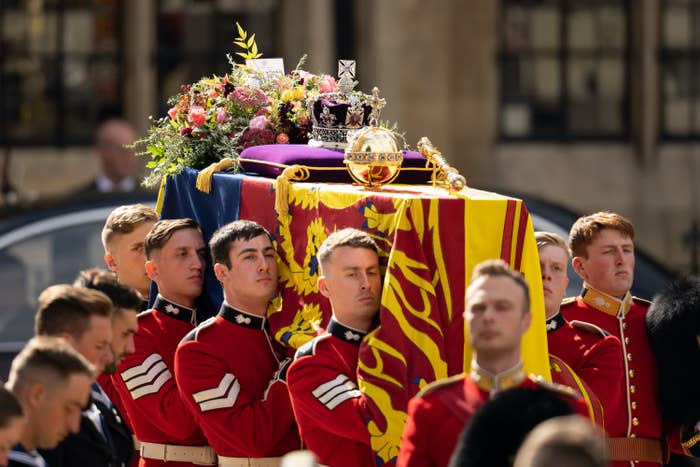
The state funeral and committal ceremony for Queen Elizabeth II were held Monday at Westminster Abbey and St. George’s Chapel in Windsor. The Queen, who died at the age of 96 on Sept. 8, ruled the United Kingdom and the Commonwealth for 70 years and 214 days — the longest reign of any British monarch in history. World leaders flocked to London for her official funeral, likely to be one of the most-watched television events in history.
Here are the moments and special details from the official funeral ceremonies that you might have missed:
There were so many world leaders at the funeral that they had to be bused to Westminster Abbey to keep traffic under control.
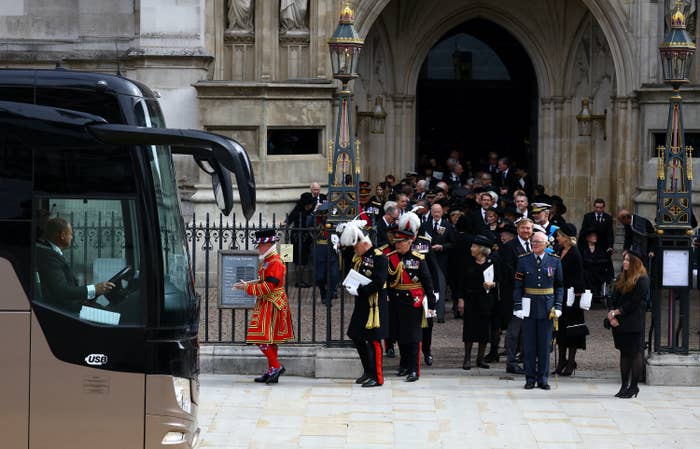
Presidents, prime ministers, monarchs, and other world leaders traveled to London for the Queen’s state funeral. (You can see a list of them here.) In order to control traffic, the UK government requested that these high-profile individuals essentially carpool to the state funeral in Westminster Abbey — and many of them did! (US President Joe Biden and his wife, first lady Jill Biden, did not take the bus for security reasons.)
The Queen chose music from significant moments in her life to be played at her funeral.
Members of the royal family participate in the planning of their own funeral services, and the music for the official ceremony was handpicked by the Queen before her death. The Queen specifically chose the hymn “The Lord’s My Shepherd” for the service. It was reportedly one of her favorites, and it was played at her wedding to Lt. Philip Mountbatten in 1947. The BBC reported that during the wedding planning, Elizabeth, then the Princess of York, and her sister Princess Margaret asked the Westminster Abbey master of choristers to come to Buckingham Palace so that she could sing the exact version of the hymn that she wanted for her wedding service. She also chose the anthem “O Taste and See How Gracious the Lord Is,” which was composed by Ralph Vaughan Williams for her coronation ceremony in 1953.
The piper who performed at the funeral and committal ceremonies was the Queen’s official bagpiper. (It’s been an actual position since Queen Victoria’s reign.)
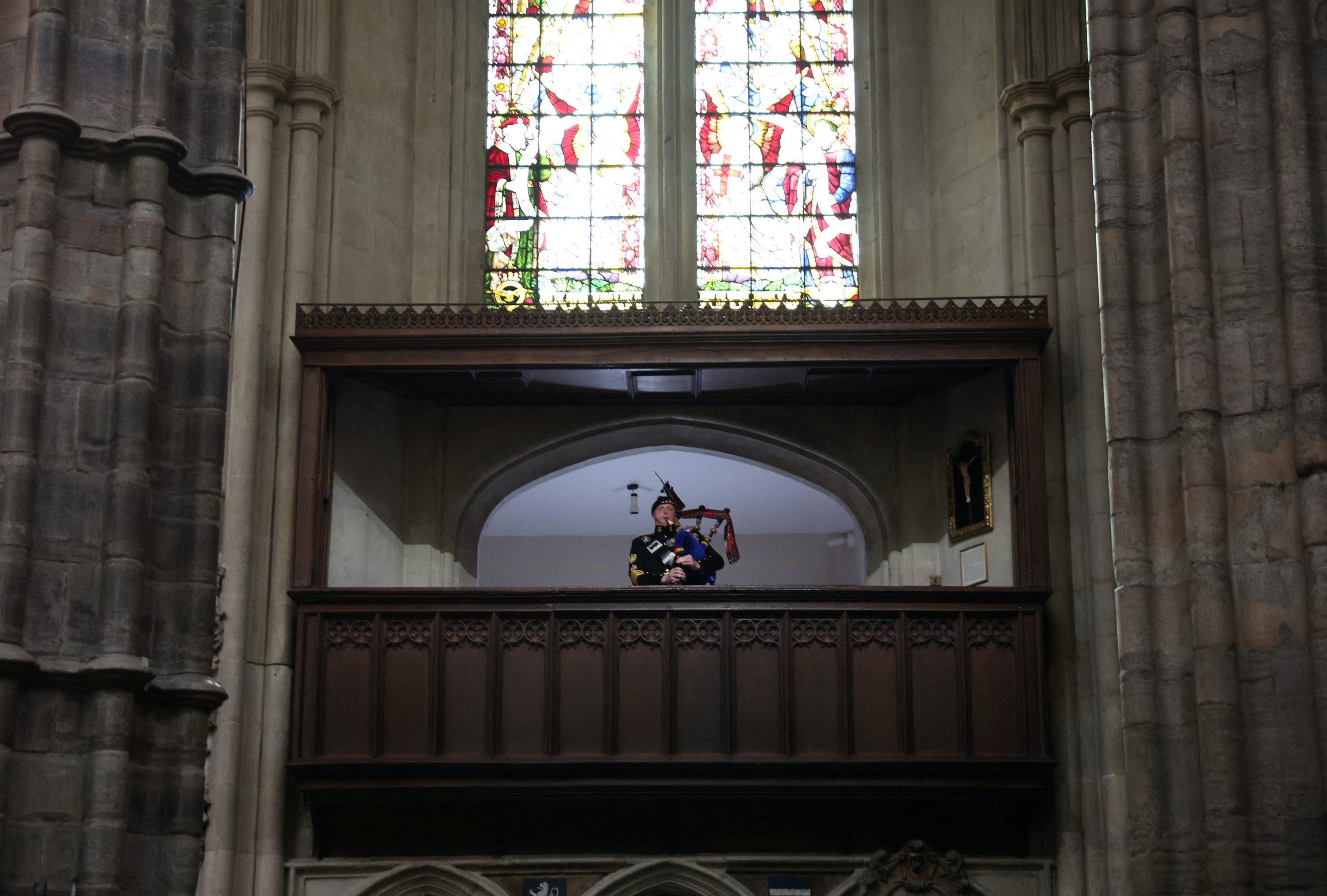
The Queen personally requested that her official bagpiper — whose exact title is the Sovereign's Piper of the Royal Regiment of Scotland — perform at her funeral and committal services. The piper’s duty is to play the bagpipes under the window of the monarch as a sort of alarm clock every morning. The position was founded by Queen Victoria in 1843. You can read more about the Queen’s piper here.
The flowers in the wreath placed atop the Queen’s coffin have symbolic meaning and came from royal gardens.
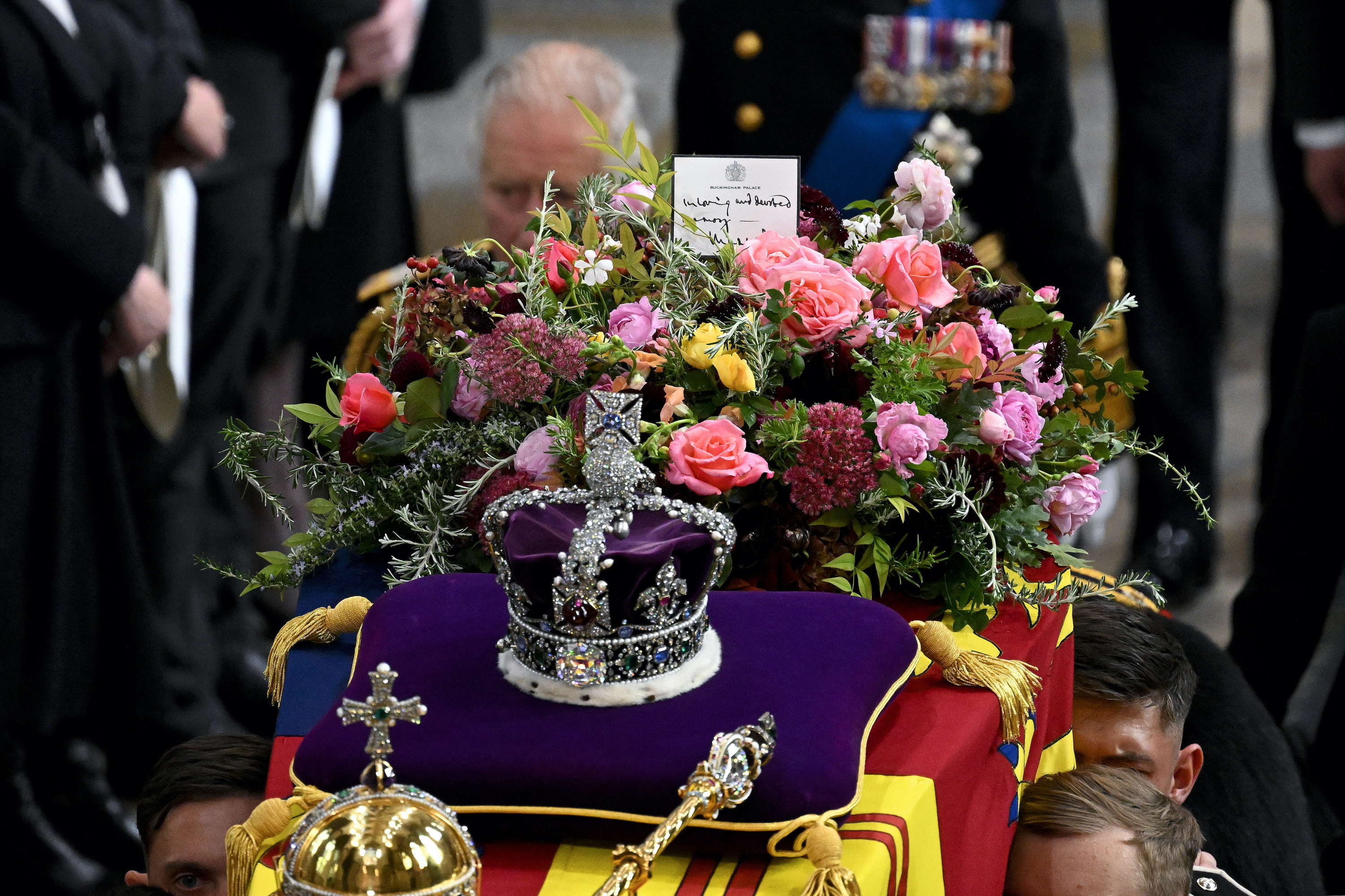
The wreath was designed according to King Charles III’s wishes and contained flowers and foliage from the gardens of three royal residences: Buckingham Palace, Clarence House, and Highgrove House in Gloucestershire. Every plant has a symbolic attribute. The wreath included: rosemary, for remembrance; English oak, to represent the strength of love and the Queen’s steadfast duty to her country; and myrtle, an ancient symbol of a happy marriage. The myrtle in the bouquet was grown from a sprig that the Queen carried in her wedding bouquet when she married Prince Philip in 1947. You can read more about the flowers (and the note on top of the wreath) here.
Members of the royal family couldn’t hold back their tears.
The world may have lost a Queen, but the Mountbatten-Windsor family lost a mother, grandmother, and great-grandmother. The grief was visible on the faces of many members of the royal family.
Many of the women in the royal family — and young Princess Charlotte — wore jewelry that had a special connection to the Queen.
Camilla, the Queen Consort, Catherine, Princess of Wales, Meghan, Duchess of Sussex, and Princess Charlotte of Wales all wore specific items of jewelry to honor the Queen. Some pieces had been personally loaned by the Queen; the others were gifts. You can read more about the jewelry here.
The Queen’s beloved pony and corgis watched the procession of the Queen’s coffin as it made its way to St. George’s Chapel.
The monarch’s beloved animals lined the procession route as the Queen’s coffin made its way through the grounds of Windsor Castle. Her Fell pony Emma stood alone with her handler alongside flowers left by members of the public on the Long Walk. Inside the quadrangle of Windsor Castle, her two corgis Sandy and Muick waited to bid her goodbye one final time. (They will be moving to live with Prince Andrew, Duke of York, and Sarah, Duchess of York.) You can read more about the corgis and pony here.
A photographer was hidden at the top of the stairs outside St. George’s Chapel.
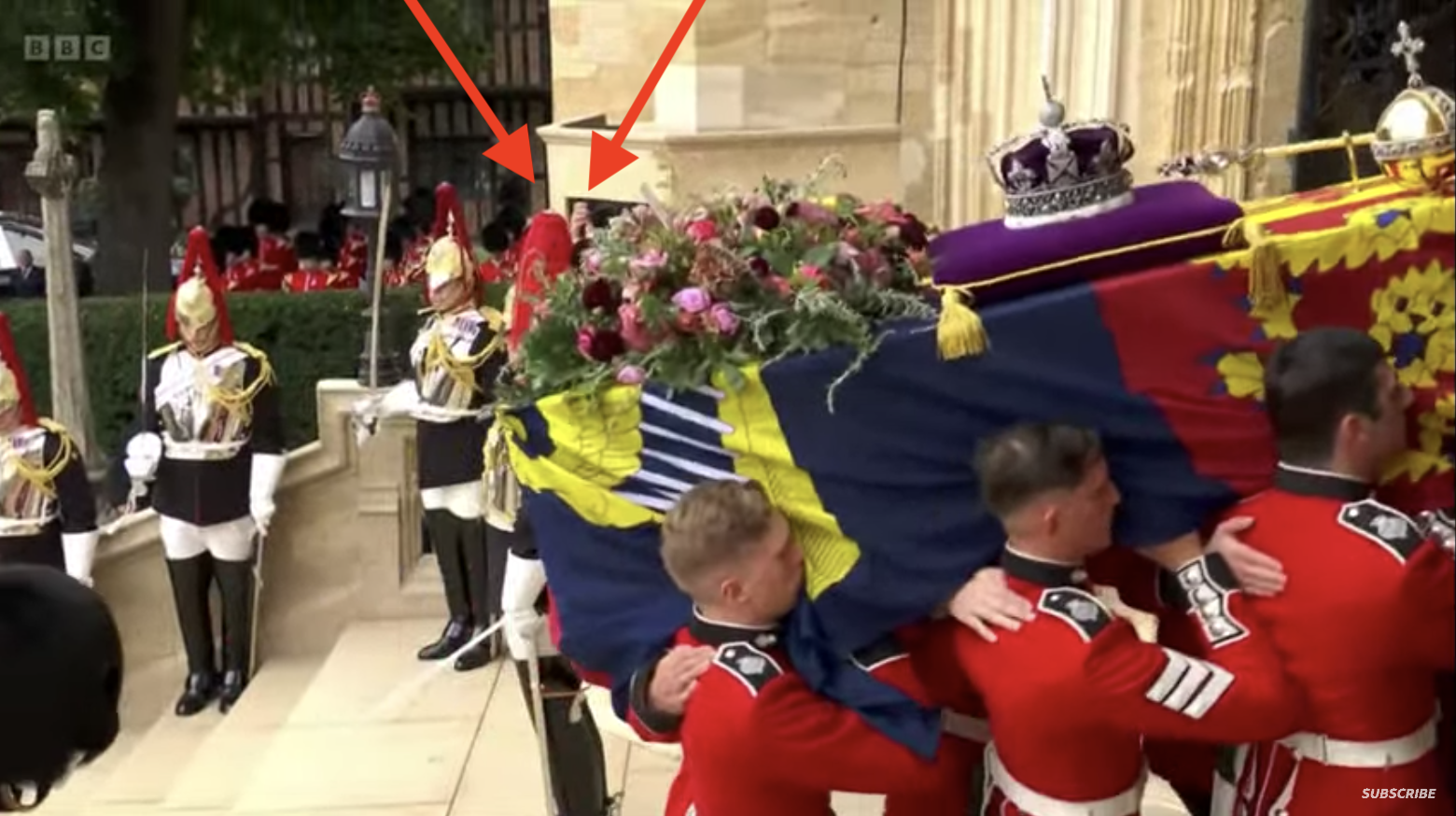
If you paid careful attention as the Queen’s coffin was being carried into St. George’s Chapel, you might have seen something unexpected: a hand, carrying a camera, coming out of a hole in what appeared to be a normal column on the left side of the church’s doors.
Although the identity of the hidden photographer has yet to be revealed, it seems likely that it’s a longtime royal photographer for the Sun, Arthur J. Edwards. He was personally given permission by Prince Philip to hide at the top of the stairs and capture images of the royal family arriving at the Duke of Edinburgh’s funeral last year, as he wrote in an essay for the Sun published April 17, 2021.
“The Duke, who planned every moment of yesterday’s moving funeral service, had arranged for me as a photographer to hide inside a fake pillar at the top of the stairs leading to St George’s Chapel,” Edwards wrote. “With a letter box-shaped slit, it was just like the bird-watching hides where Prince Philip spent hours during his retirement at Sandringham, his Norfolk estate.” (BuzzFeed News has reached out to Edwards to see if it was him taking photos on Monday.)
Princess Charlotte reminded her brother Prince George to bow to the Queen’s coffin:
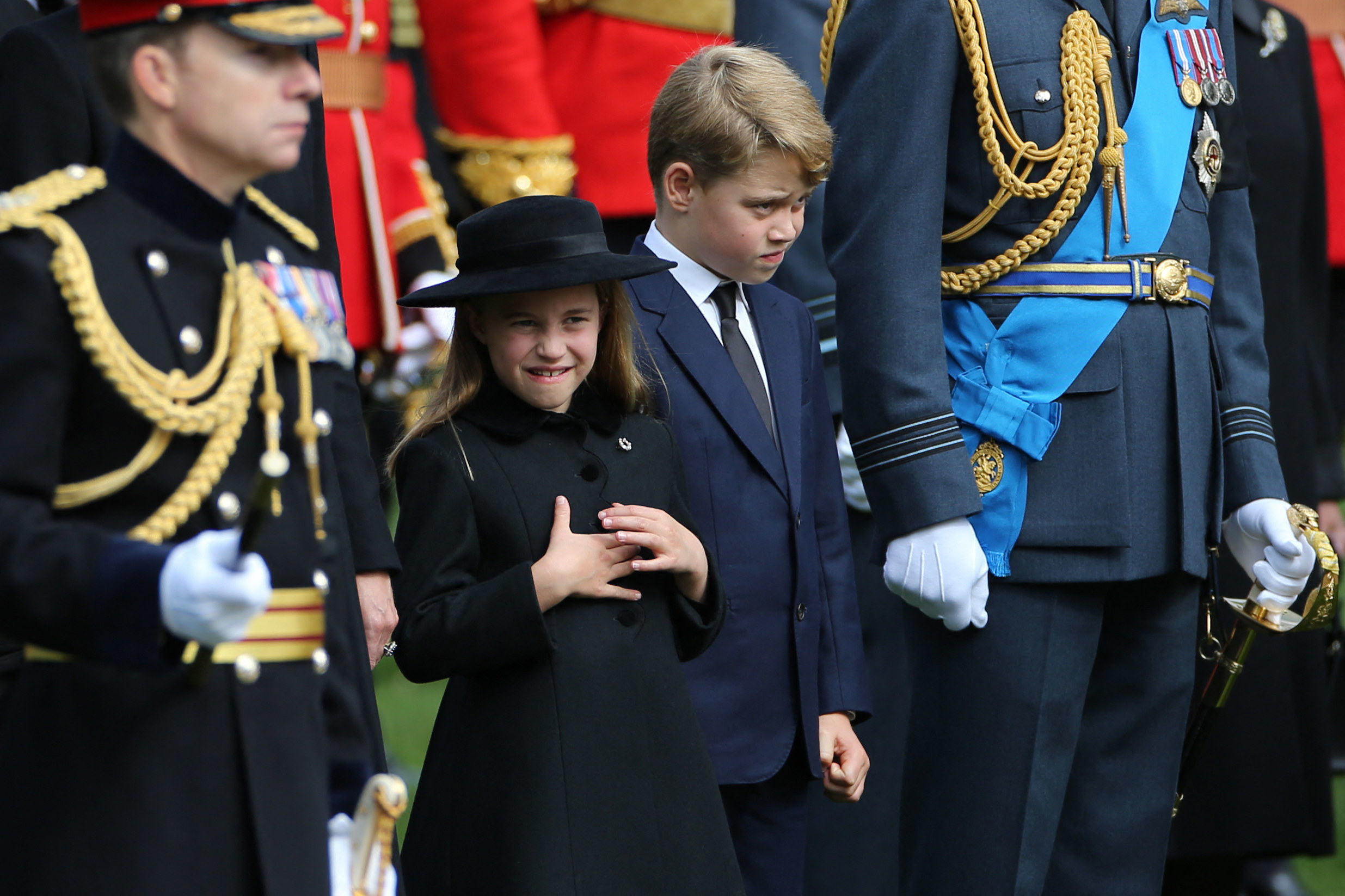
In a sweet clip that’s gone viral on Twitter and Instagram, Charlotte reminds her big brother to acknowledge the Queen’s coffin as they stand at attention watching its procession.
Prince George and Princess Charlotte chatting to each other🥺
The breaking of the Wand of Office, a traditional part of the state funeral of a monarch, was seen by the wider public for the first time in history.
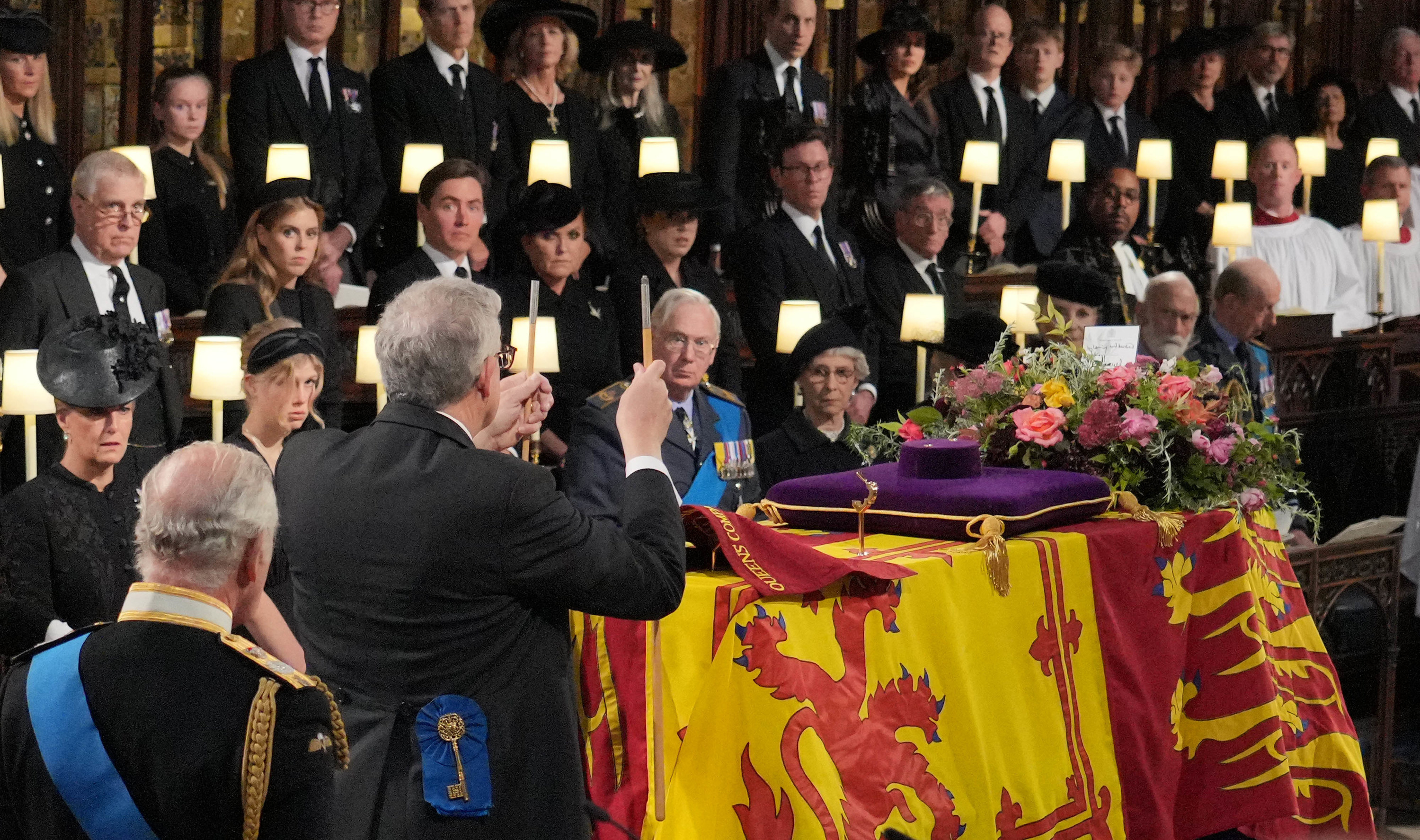
As Deadline noted, the Queen’s televised committal service resulted in the wider public seeing one of the ceremonial parts of a sovereign’s funeral for the first time. The Wand of Office is the symbol of the Queen’s lord chamberlain, who is the head of the royal household. By breaking the stick, the lord chamberlain (in this case, Lord Andrew Parker) symbolizes the end of his service. The pieces of the Wand of Office are placed on top of the monarch’s coffin and buried with them. Read more about the tradition here.
The Lord Chamberlain breaks his Wand of Office: a symbolic part of the sovereign's funeral ceremonies that, until today, had never been seen by the wider public: (📹: BBC)
